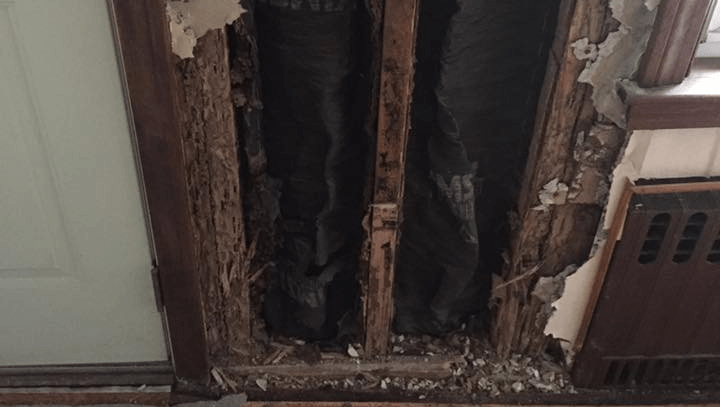Termite Swarm Season Tips
Keep Your Property Protected From a Termite Invasion!

You most likely picture blooming flowers with the return of warmer weather, when you think of springtime. However in the pest control world, spring marks the outset of the peak pest season, when most insects are coming out of their winter hiding areas, mating - and in some cases - locating their way into our homes. Unfortunately, among the most common springtime pests is also one of biggest dangers to properties and our homes - termites.
Termites have existed for more than 120 million years. They're social insects and live in colonies which are usually found in wood or in the ground. Termites feed on the cellulose in wood and wood byproducts, for example paper. Every year, they are estimated to cause $5 billion in property damage. What is worse, this damage isn't commonly covered by homeowner's insurance, and - because they often remain out of sight - their damage can go undetected for a long time, until serious dilemmas arise. Hence, it is important to understand the life cycle of the signs, along with termites that a colony has taken up residence at home.
Termite Life Cycle
There are more than 2,000 known termite species in the world, with at least 50 species occurring in the U.S. Termites are commonly classified into three groups based on the place of the colony - subterranean, drywood and dampwood. A colony is made up of workers, soldiers and swarmers. Workers keep the colony, build or fix the nest, and forage for food for the colony. Soldiers are infertile, as well as their primary function will be to defend the colony.
Swarmers, also known as reproductives, have two pair of wings, which lie flat over the abdomen when not in use. The female termites release 'mating pheromones,' much like perfume, to entice male termites. They break off their wings, symbolizing that they're a couple once an alluring female is located by the male. The new couple mate then select a nest location, and become king and queen of a new colony. The queen was known to live for 30 or more years.
Depending on the species, it can take a few years before a adulthood is reached by a newly founded colony and produce its own swarmers. In the very first year, the queen can lay anywhere between 22 and zero eggs. So at the end of the first year, as many as 75 individuals may be contained by a subterranean colony, whereas drywoods may include just a dozen. Due to this, it may take many years before a colony is big enough to cause observable damage to the wood they infest.
In colder regions where termites don't usually live new colonies could be started in one of two ways; when infested wood is introduced to a new place, or by division. Division generally occurs when a new food source is found and a subcolony is formed to exploit the source. Eventually, this subcolony can subsequently generate the needed reproductives from nymphs (young termites), and completely break off as its own colony.
Signs of Termites
Swarms (and the shed wings left behind) are often one of the only outwardly visible signs of termites. Because of this, many individuals are under the misconception that termites are only an issue in the springtime. Nonetheless, some termite species - including subterranean termites - can remain active (though out of sight) year round, especially in warmer climates. In these instances, termites can be at work, eating away at wood 24 hours a day, 365 days a year.
Most termite species cannot crawl on the open ground like ants and other pests. They construct shelter tubes to go between food sources and their colony. These shelter tubes are another hint homeowners may utilize to identify the presence of termites near their residences. Homeowners should likewise be on lookout for bubbling or cracked wood and paint that seems hollow when tapped. Should you see signs of termites in or near your house, it is vital that you work with a professional before serious damage is done, to take care of the infestation. Termites aren't a pest that may be treated with DIY measures.
It's possible for you to find out more about termite species along with the signals of termites by reading this article, and learn about the value of wood-boring pest inspections and working with a professional to take care of termite infestations.
Yes… They're known as "quiet destroyers" because of their capability to chew through wood, flooring and even wallpaper undetected. Every year, termites cause more than $5 billion in property damage - prices that are not insured by homeowners' insurance policies.
Swarmers are looking to begin a brand new colony and are commonly the very first sign of the termite season as these winged-pests appear inside dwellings in early spring.
Suspect you have termites attacking your property? Call on Pest Assassins to conduct a thorough termite inspection and provide you a quote for termite treatment to eliminate the current termite colony and prevent future ones from invading too. Pest Assassins uses the best products and equipment in the industry to protect your home or business in Framingham, Westport, South Kingstown and Cranston and throughout our service area in Massachusetts and Rhode Island from termite damage. Contact Pest Assassins today for effective termite control!

